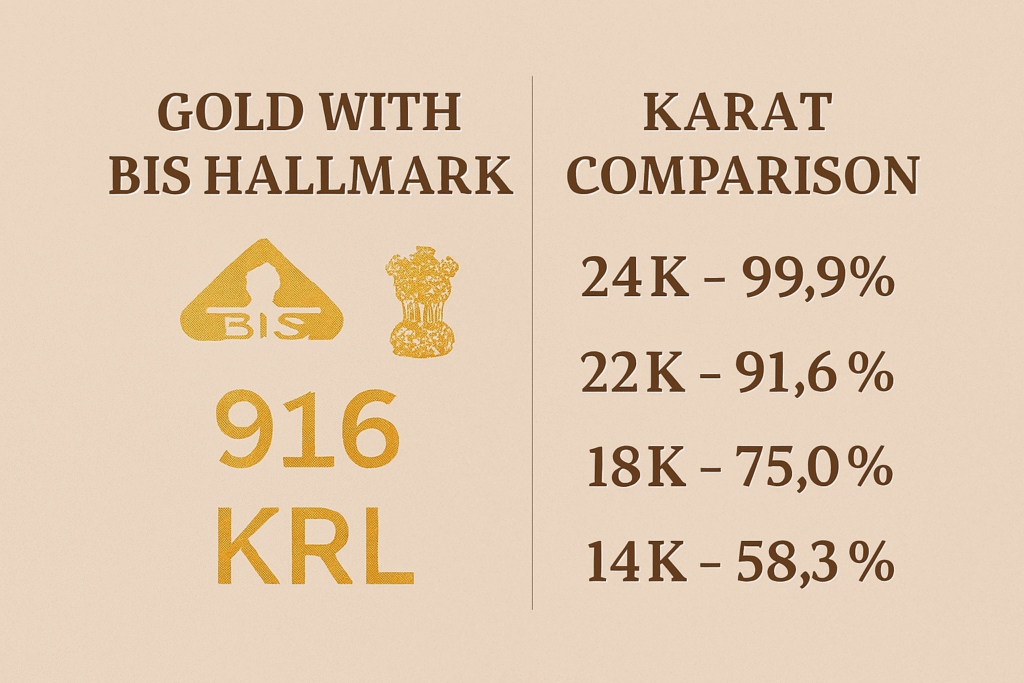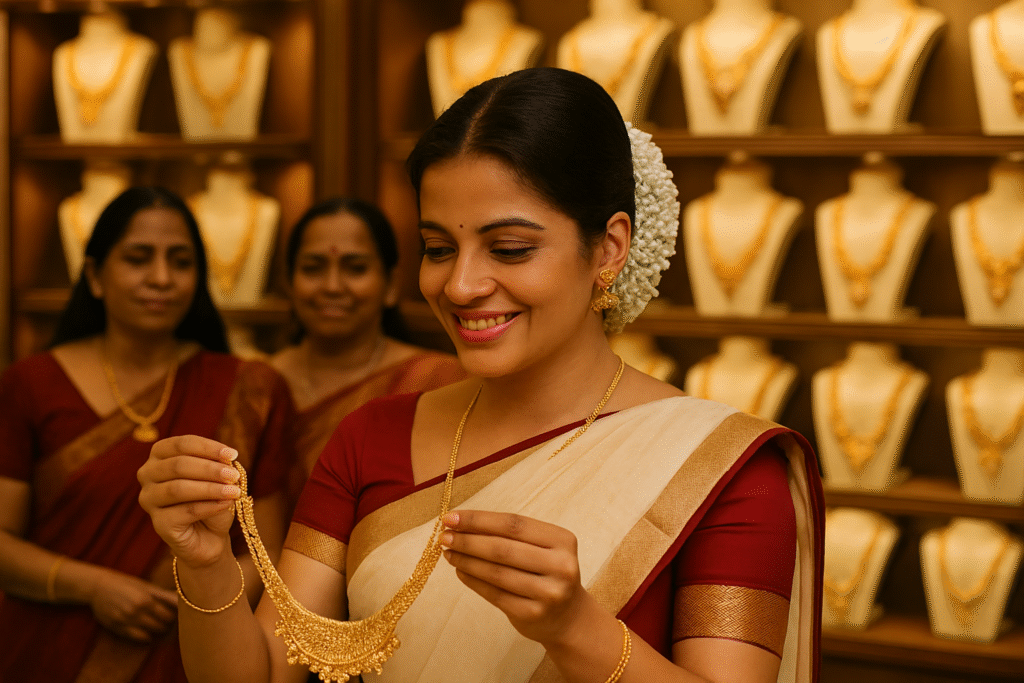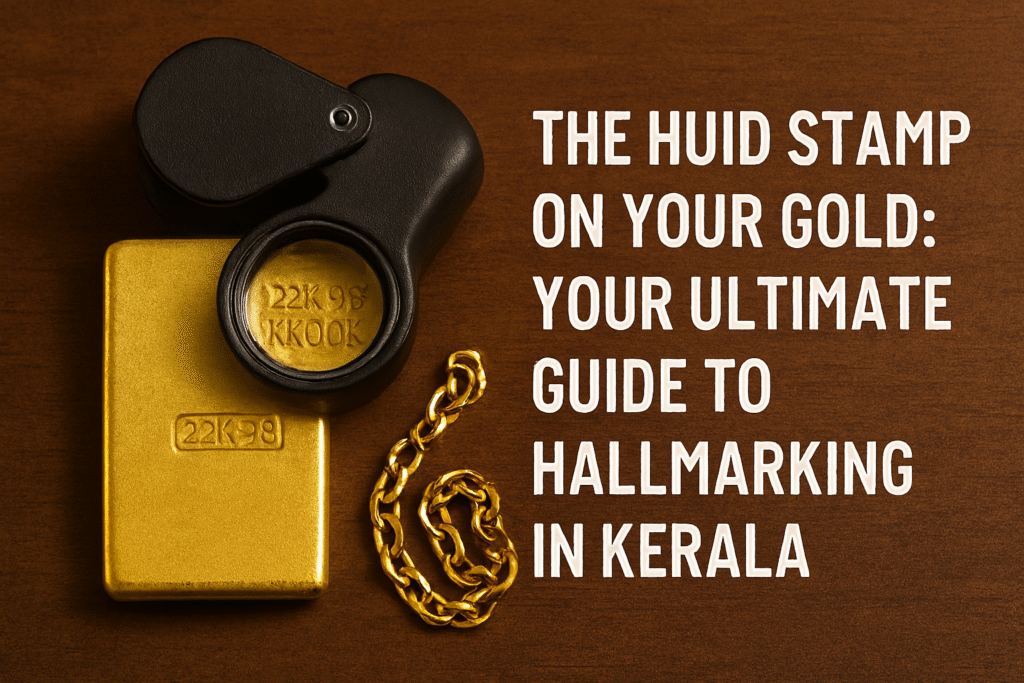Understand gold purity in Kerala. Learn the difference between 22K and 24K gold, and why the BIS hallmark on your jewellery is the key to trusted quality.
When you buy gold jewellery in Kerala, you see numbers like 22K or 24K stamped on the piece. You also see a small mark called the BIS hallmark.
What do these symbols mean?
Karats Explained
- 24K gold = pure gold (99.9%)
- 22K gold = 91.6% gold + small mix of other metals
- 18K gold = 75% gold + more alloy for strength
You rarely find 24K jewellery in Kerala shops. Pure gold is too soft to hold stones or withstand daily wear.
Most ornaments here are made in 22K. It balances purity and durability.
Ask yourself: Do you want gold for investment or daily wear?
- For investment: 24K coins and bars are best.
- For ornaments: 22K is the standard choice.
The Role of BIS Hallmark
BIS = Bureau of Indian Standards.
A BIS hallmark guarantees that the gold purity matches the karat mark on your jewellery.
On a hallmarked piece, you’ll see:
- BIS logo
- Karat and fineness number (22K = 916, 18K = 750)
- Assay centre mark
- Jeweller’s identification mark
Example: A ring marked with “22K916” means it has 91.6% pure gold.
Without a hallmark, you only trust the word of the seller. With a hallmark, purity is tested and certified.
Why It Matters in Kerala
Gold is more than jewellery here. Families see it as wealth, security, and tradition.
When you buy, you want to be sure your savings are safe. A BIS hallmark is the proof you need.
Takeaway for You
- Always check karat before buying
- Look for the BIS hallmark stamp
- Decide between 22K and 24K based on use
- Ask your jeweller to explain the markings
When you walk into a jewellery shop in Kerala, will you trust just the shine, or will you check the hallmark?



